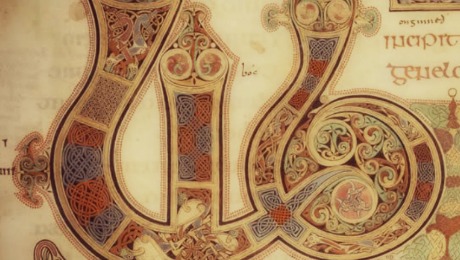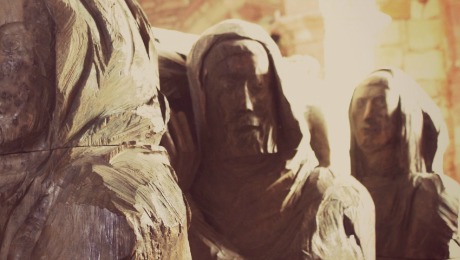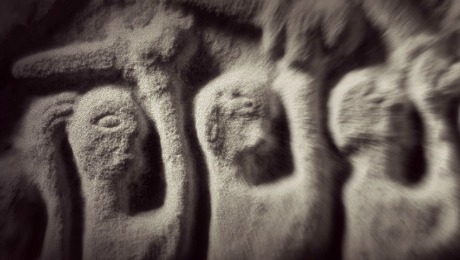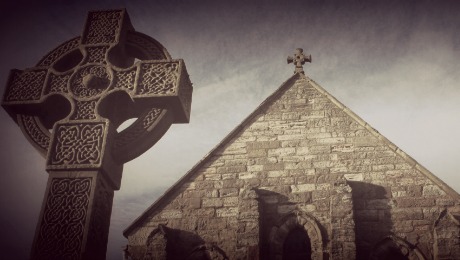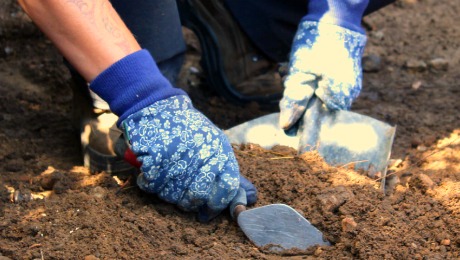In AD635, King Oswald founded a monastery on the tiny island of Lindisfarne. From humble beginnings, it soon became the religious powerhouse at the heart of the great Anglo-Saxon kingdom of Northumbria, and the wellspring of England’s Christianity.
Anglo-Saxon England, Northumbria. A little over 200 years after the Romans have left and a fragmented kingdom has been reunited. Edwin, the first Christian king of Northumbria has died fighting the pagan Mercians and his nephew Oswald is ready to rule. Northumbria is on the brink of a Golden Age, but first Oswald has a monastery to build…
Oswald had spent much of his childhood exiled in western Scotland, and been converted there to Christianity by Irish monks (unlike the monks from Rome who converted his uncle). As king, it was now time for Oswald to found his own church.
And so it was that Oswald sent for some monks from the well-established monastery at Iona in Scotland to help him. Unfortunately, the first priest they sent was too austere, so Oswald sent him back. In his place came the great Irish saint, Aidan. At first, Aidan could not speak Anglo-Saxon and Oswald himself had to translate for him. Together they chose the site on which they would build their monastery: the island of Lindisfarne.
In the beginning, Lindisfarne was made of wood
The first buildings, even the church, were built in the Irish tradition – out of wood. When Bede wrote about it, he noted that the monastery had plenty of cattle, and not much gold. But that would soon change.
Anglo-Saxon monasteries were quite different to the later medieval ones with which we are more familiar. This one would have been a more dispersed complex of buildings. Starting with a main church and cemetery at the centre, these would be surrounded by outer enclosures, which would have contained the monks’ homes, a guest house and other churches and cemeteries.
The Roman vs. Celtic Church
Despite its humble beginnings, Bede’s writings suggest that the early monastery at Lindisfarne soon thrived. But Oswald’s Irish-influenced ‘Celtic’ Christianity was not to last; it was Edwin’s Roman-influenced church that was spreading throughout the rest of Northumbria.
This tension was only resolved 22 years after Oswald’s death, when the then King Oswiu held a great church meeting at Whitby in AD664 and decided that Roman Christianity should prevail in his kingdom.
Rejecting Oswiu’s decision, the Abbot and many of his monks left Lindisfarne, and was replaced by the Roman-influenced Saint Cuthbert, who gave the monastery a new lease of life.
A new lease of life
With Cuthbert on the island, the monastery quickly expanded; there were hermitages (some on islands across the water), guesthouses, several churches and multiple cemeteries. And as the monastery became more important, wealthy nobles gave it land. The monks built workshops, granaries and farm buildings to deal with it all.
Important religious sites also developed outside of the monastery confines, particularly on nearby St Cuthbert’s Island and across the sea at Inner Farne, where Cuthbert died at the end of the 7th century.
Monastic powerhouse
Within 150 years, Lindisfarne had become a monastic powerhouse. It controlled huge swathes of northern England and southern Scotland. It produced some of the finest artworks of the early medieval world. The original wooden churches were rebuilt in stone, and the shrine of Saint Cuthbert became one of the most important pilgrimage sites in Britain.
On top of that, its position just across the water from the great palace of Bamburgh also put it close to many popular sea-lanes, which meant Lindisfarne was not only connected with the great power-centres of Anglo-Saxon England, but that its influence could reach far beyond, all the way to the Continental mainland.
But its spectacular coastal position and uncontested power were also its greatest weaknesses; this is what left it open to attack from the Viking raiders who came from across the North Sea…
